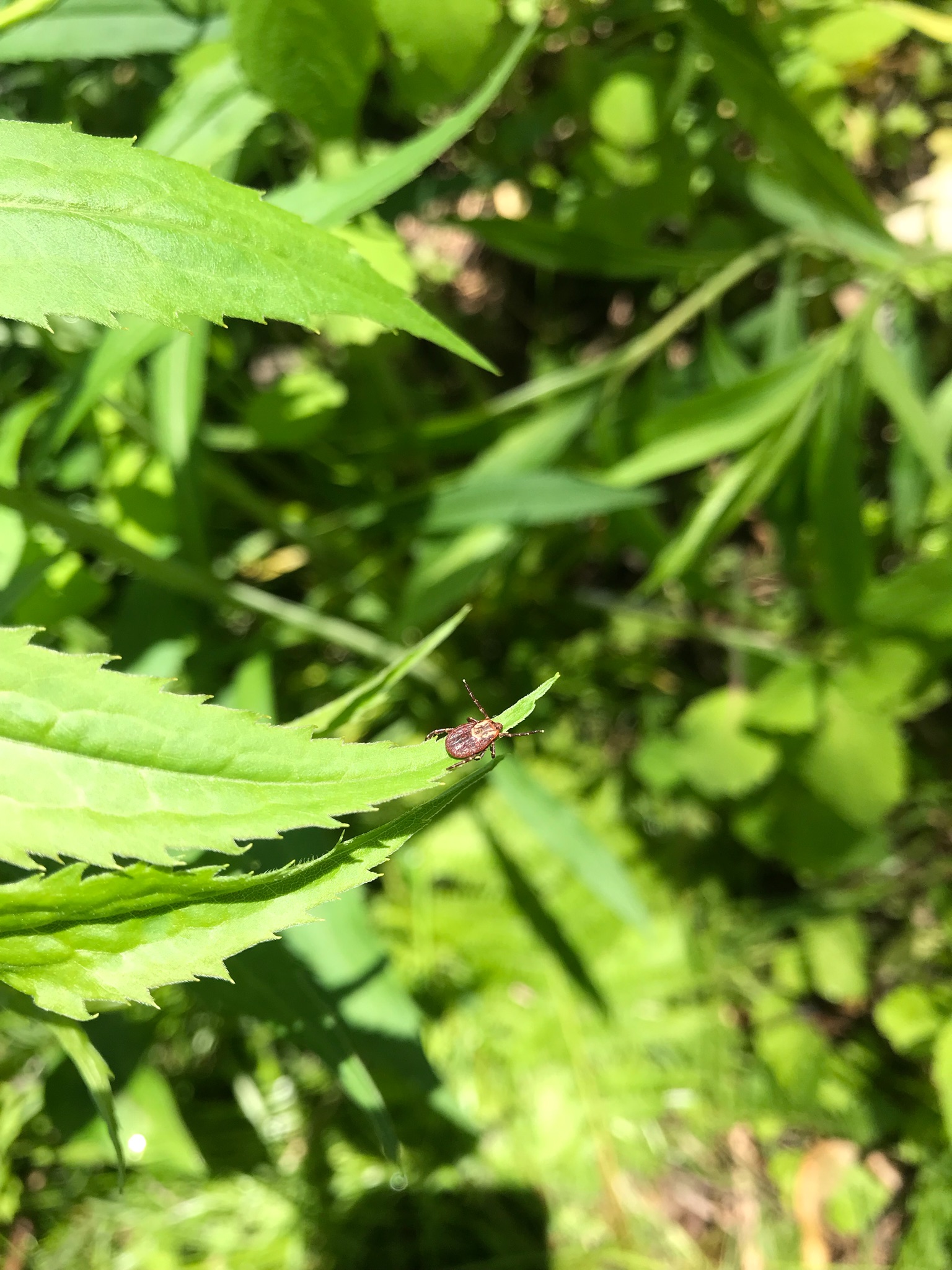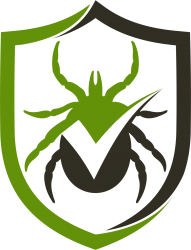The majority of insect repellents are used in the form of a spray, the safest formulas of which are either water-based or have a low percentage of alcohol. Repellents are also produced in the form of lotions. The chemicals in a lotion repellent are 50% more effective when compared to spray repellents, and lotion repellent is also usually kinder to the skin.
All insect repellents work due to what is known as an active ingredient, which is, in essence, the chemical compound which makes the repellent work. Understanding and identifying these compounds are essential to making a good decision about repellent choices. Listed below are some of the more common active ingredients in tick repellents, as well as some other ways of keeping ticks at bay that do not involve tick repellent on clothes or skin.
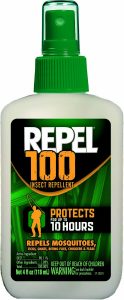 DEET (N, N-diethyl-meta-toluamide)
DEET (N, N-diethyl-meta-toluamide)
DEET is an ingredient used in insect repellent to prevent and repel bites from insects like mosquitoes, biting flies, ticks, and other bugs. DEET can be used in the form of a spray, lotion, or stick and should be applied directly onto the skin. After the DEET product has been applied, a vapor will guard the body from intruding insects. This vapor will cause confusion amongst the insects and will cause them to lose the ability to pinpoint where their hosts are. Be aware that high concentrations of DEET can be harmful to a person’s health.
Many DEET product sprays are packaged with a high percentage of alcohol, which can shorten the effects of the repellent and can also cause skin irritation if it is used frequently.
Example: Repel 100 Insect Repellent.
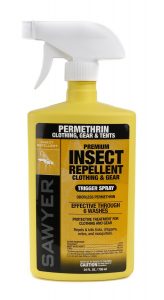
Permethrin (3-(2,2-dichloroethenyl)-2,2-dimethylcyclopropanecarboxylic acid)
Permethrin, although widely recognized as an insect repellent, is actually an insecticide. Any insect such as a tick, mosquito, or chigger will die when coming into contact with this chemical.
Permethrin may be applied onto clothes, outdoor gear, bedding, etc. Once clothing and gear have been treated with permethrin, the effects of the chemical will last for several weeks and can endure weekly washes. Permethrin is also used in another form to treat scabies and head lice.
It is important to note that Permethrin should be kept away from cats as well as any aquatic pets such as fish- this chemical can be deadly to such animals.
Example: Sawyer Premium Permethrin Insect Spray
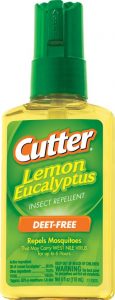 Oil of Lemon Eucalyptus (p-Menthane-3,8-diol)
Oil of Lemon Eucalyptus (p-Menthane-3,8-diol)
Oil of Lemon Eucalyptus, is a synthetic concentration of p-Menthane-3,8-diol. This compound is not to be confused with lemon eucalyptus essential oil, which will not repel ticks. While the essential oil does contain naturally occurring p-Menthane-3,8-diol, it is not present in high enough concentration to protect against insects.
This ingredient is recommended for use on children 3 and older, and at a recommended concentration of 30%. Each application can provide protection for 2-5 hours.
Example: Cutter Lemon Eucalyptus Insect Repellent

Picaridin (KBR 3023)
Picaridin is a chemical used to repel mosquitoes, ticks, chiggers, and other insects. It will not kill these insects, but merely acts as a preventative agent against bites. A concentration of 10-20% is recommended, and can protect against insects for up to 12 hours.
Picaridin is a relatively recent discovery, having been first used in Europe and then in America during the early 2000’s. Picaridin can be used on both clothing and skin, and is produced in multiple forms such as a pump spray, liquid form, aerosol, or wipes.
Example: Avon Bug Guard
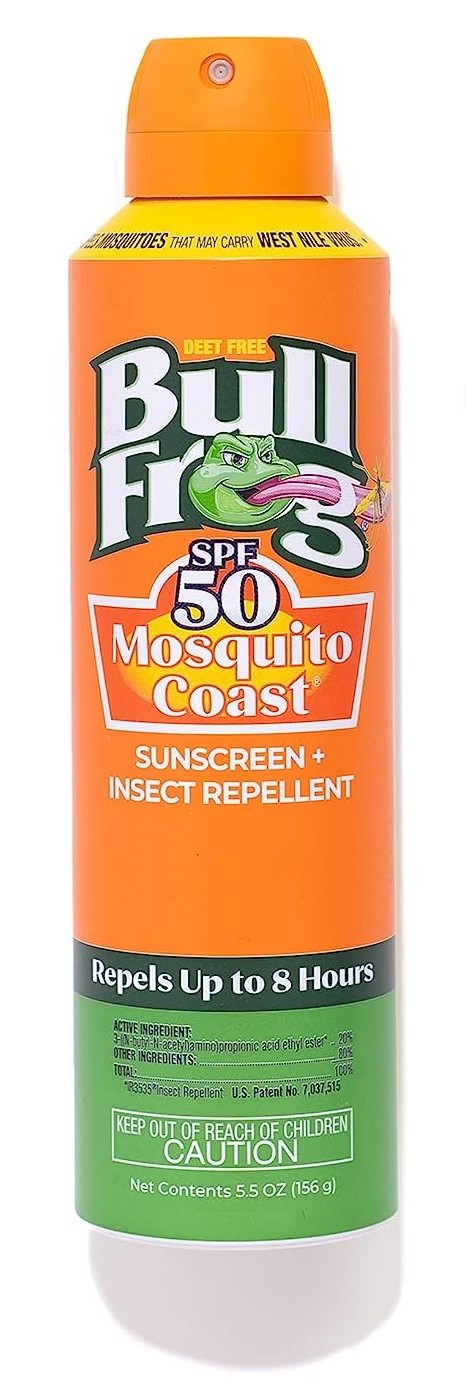 IR3535 (3-[N-Butyl-N-acetyl]-aminopropionic acid, ethyl ester)
IR3535 (3-[N-Butyl-N-acetyl]-aminopropionic acid, ethyl ester)
IR3535 is an insect repellent that protects against bugs of all types: mosquitos, ticks, and even head lice. It does not kill insects, but discourages bites. IR3535 is considered to be especially effective against deer nymph ticks, and unlike many other insect repellents, is completely odorless.
IR3535 was discovered over 30 years ago and can be found in sprays, lotions, sticks, and wipes. IR3535 is safe for young children and pregnant women and provides protection for up to 6 hours.
Example: Bullfrog Sunscreen and Insect Repellent
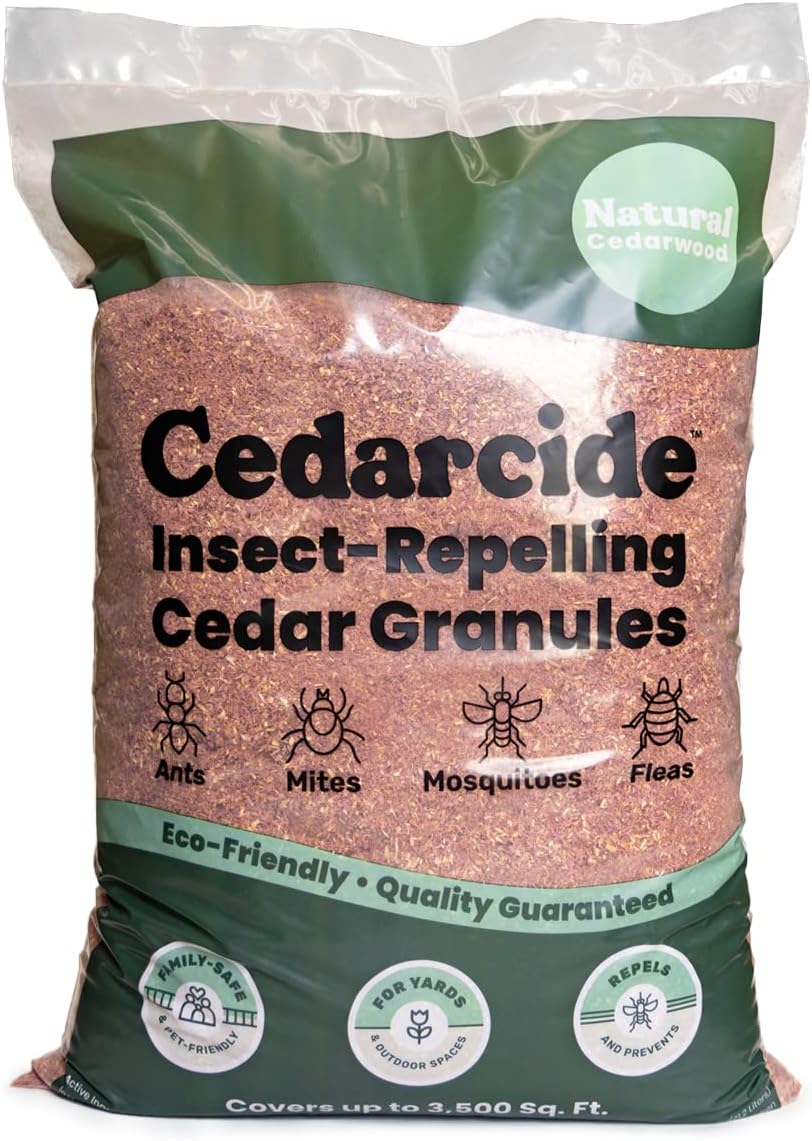 Mulch Barriers
Mulch Barriers
Mulch barriers can help keep ticks at bay, at least within the confines of your own property. Cedar wood granules are a 100% natural way to keep ticks and other insects away from your yard. The natural aroma emitted by the cedar wood acts as a safe deterrent to such pests. Ticks are not able to pass mulch barriers, although they can be carried over by a host that they have bitten.
Creating a mulch barrier consists of creating a border of cut grass which surrounds the perimeter of a lawn, and then covering the cut grass in the wood chips. For maximum efficacy, it is very important to keep the grass well trimmed, so that it does not grow higher than the barrier of wood chips protecting the lawn.
Example: Cedarcide Insect Repelling Cedar Granules
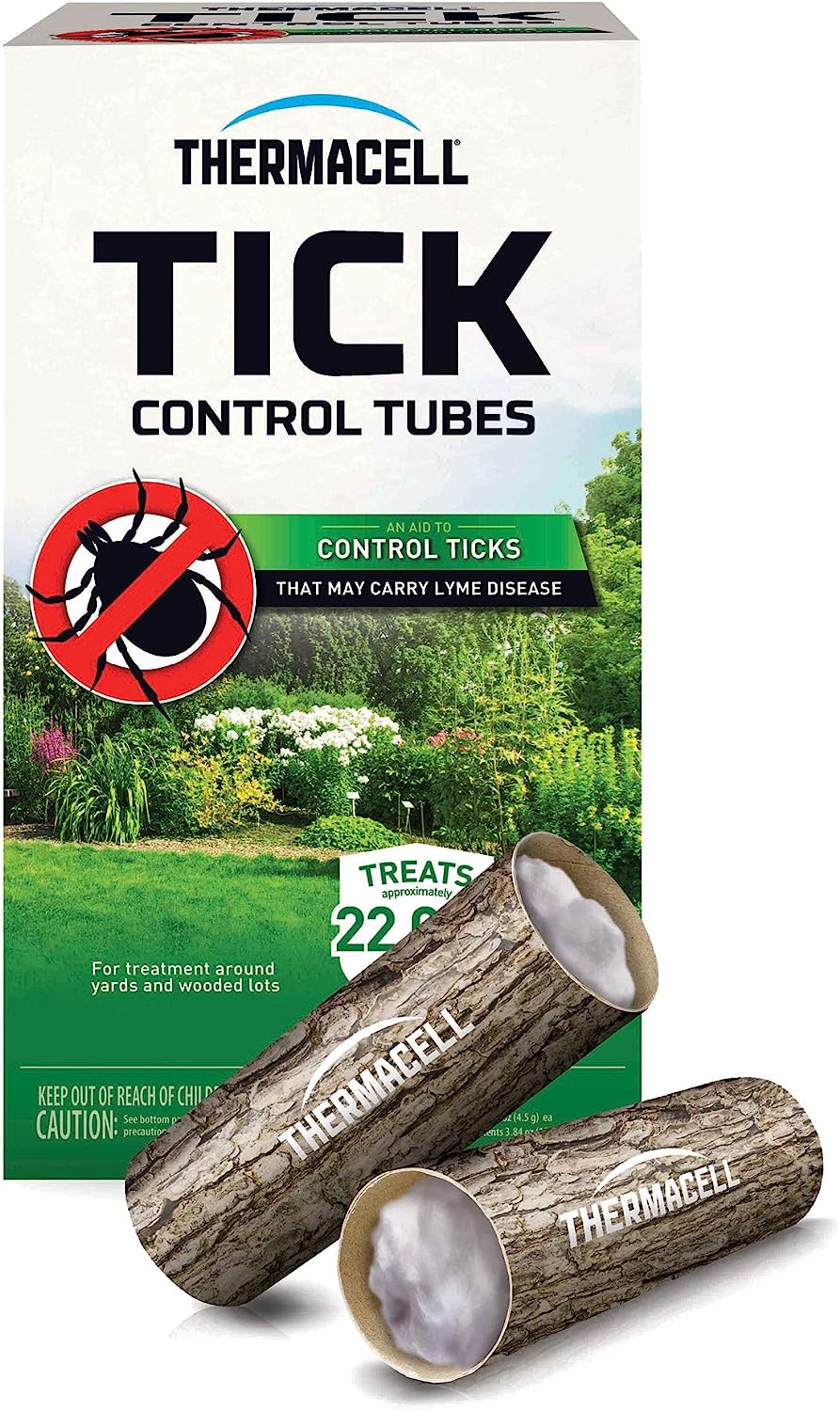 Tick Tubes
Tick Tubes
Tick Tubes are another method of preventing ticks that precludes using a tick repellent on a human. The tubes are made with a cotton nesting inside that has been soaked with with permethrin (see above).
The idea behind these tubes is relatively indirect, but often effective. The tubes should be placed in areas where mice are common. The cotton material in each tube will ideally attract mice, who will use the cotton to make their nests. Mice are some most common carriers of ticks, and if they take the cotton as intended, the ticks they carry to their nests will die. It is a way of keeping the tick population down in a relatively small area such as a campsite or backyard.
Example: Thermacell Tick Control Tubes
